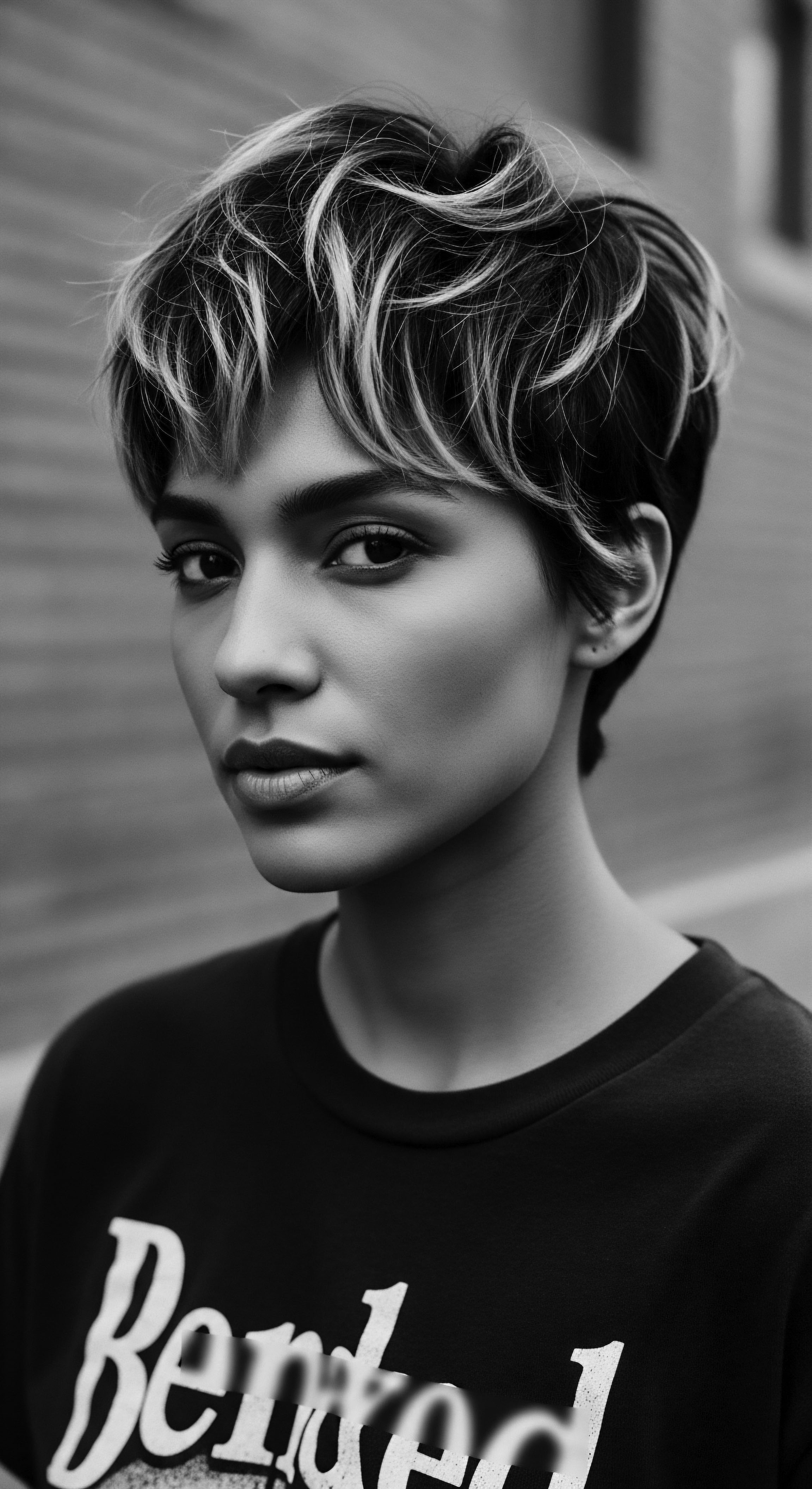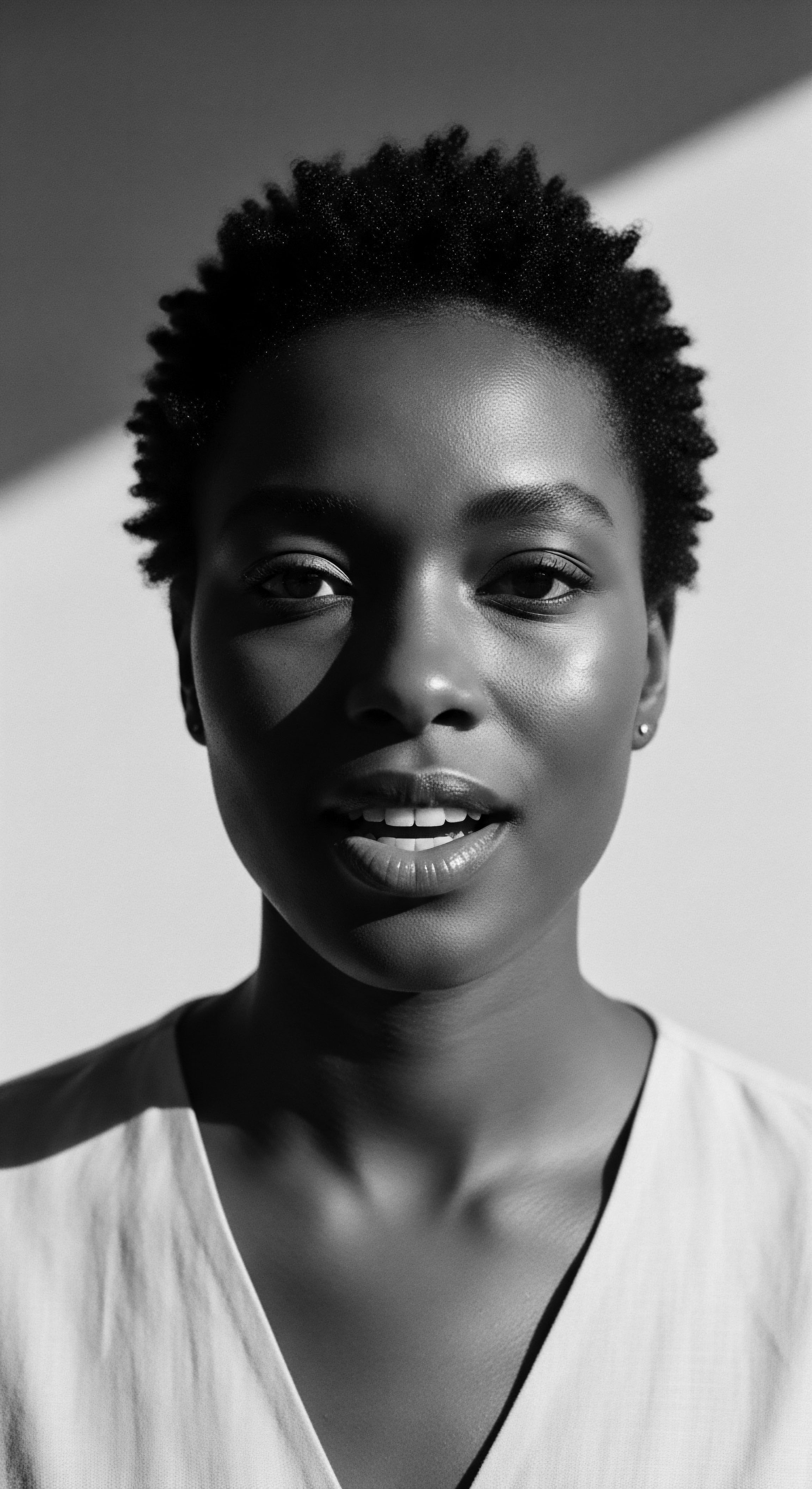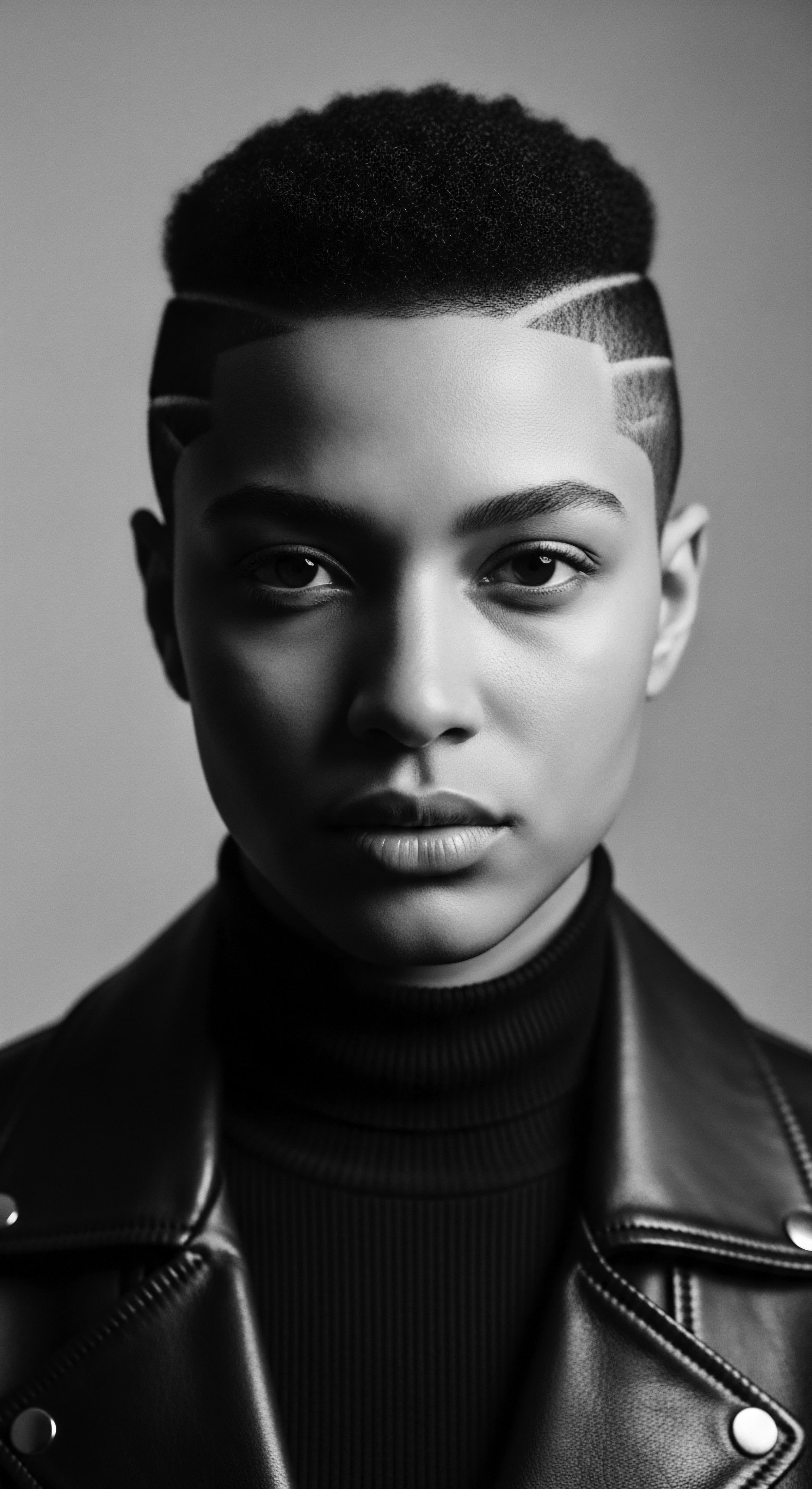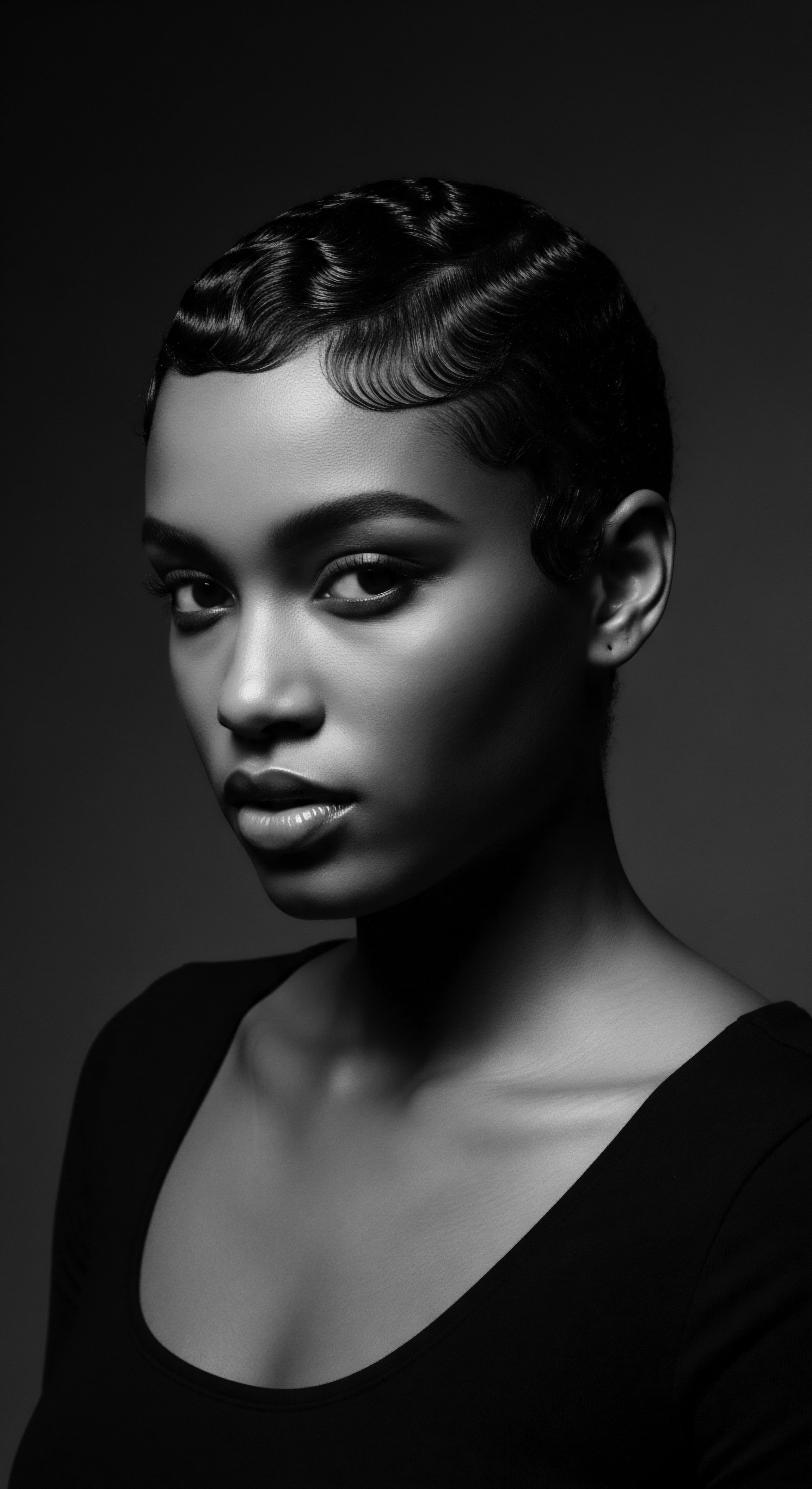
Roots
The very notion of textured hair, in its glorious coils and captivating bends, whispers tales spun over countless generations. It speaks of ancestral lands, of sun-drenched rituals, and the deep, abiding connection between the earth and our crowning glory. For those whose strands trace a lineage through Black and mixed-race ancestries, hair is seldom simply hair; it is a living chronicle, a vessel of identity, and a repository of wisdom passed down through touch and tradition. As we stand today, navigating a world brimming with synthesized solutions, a gentle call persists from the soil itself, beckoning us toward the ancient allies, particularly clays.
Can these earth-born elements, so central to our forebears’ regimens, truly hold the key to moisture retention for our unique strands? This is a question not merely of chemistry, but of heritage, a return to the source.
Consider the hair strand itself, a delicate filament, yet surprisingly resilient. At its heart, the structure of textured hair often presents a distinct elliptical shape, unlike the rounder profiles of straight hair. This inherent curvature, while beautiful, creates numerous points where the outer cuticle layer may lift, making it naturally more susceptible to moisture loss.
Historically, communities across Africa and the diaspora developed ingenious strategies to counteract this desiccation, often turning to their immediate environment for solutions. Clays, rich in minerals and possessing remarkable absorbent qualities, naturally became central to these efforts.

Hair Anatomy And Ancient Care
The very biology of textured hair, with its coiling patterns, presents a challenge for natural sebum distribution. Sebum, the scalp’s protective oil, struggles to travel down the curves of a tightly coiled strand as readily as it might a straight one. This structural reality means that many textured hair types are inherently prone to dryness, requiring external aid to maintain proper hydration levels.
Ancient peoples, though without microscopes, observed this fundamental need. Their practices, whether through the generous application of plant oils, animal fats, or mineral-rich clays, intuitively addressed this very issue, aiming to seal in what little moisture could be found or added.
The outer layer of hair, the cuticle, acts like protective scales. When these scales are smoothed and closed, moisture is sealed within the cortex, the strand’s inner core. When they are raised, moisture escapes.
Certain traditional clays, through their mineral composition and gentle cleansing action, have the capacity to respect this cuticle layer, preventing the harsh stripping that often leaves strands vulnerable. This gentle cleansing, so different from many modern detergents, lays the groundwork for sustained hydration, a foundational principle understood across generations of care.

Ancestral Classifications And Hair Language
While modern trichology offers precise numerical systems for hair typing, ancestral communities often categorized hair based on appearance, texture, and how it responded to certain treatments. These classifications were rooted in communal observation and shared experience, deeply woven into the daily rituals of grooming. For instance, a hair type described as ‘cottony’ might denote extreme softness and a tendency to shrink, signifying a need for particular emollients and gentle handling. Such descriptors were not merely aesthetic; they were practical guides for care.
The lexicon surrounding textured hair has evolved, yet many traditional terms carry historical weight. Think of the words used to describe particular braids, or specific types of combs fashioned from bone or wood. These terms often speak to the utility of specific tools and treatments.
When we discuss clay treatments, we are not just talking about a substance; we are evoking a history of usage, a language of care that transcends centuries. The very act of mixing clay with water and perhaps a local oil mirrors ancient preparations, a tangible link to those who came before us.
The inherent structure of textured hair predisposes it to moisture loss, a reality ancient communities met with intuitive, earth-based care practices.
The rhythms of hair growth and shedding were also observed by those practicing ancestral care. They understood the seasonal shifts, the impact of diet, and the effects of environmental factors on hair health. Their treatments, including clay applications, were often cyclical, aligned with these natural patterns, recognizing hair as an extension of the body’s overall well-being.

Ritual
The journey from understanding the strand’s fundamental needs to applying that wisdom transforms into ritual. For generations, hair care was not a mere chore; it was a sacred practice, a moment of connection—to self, to family, to heritage. Traditional clay treatments, far from being isolated applications, found their place within these elaborate and meaningful hair care rituals, shaping styles and contributing to the health of coiled and kinky strands. The very act of preparing the clay, mixing it with water or botanical infusions, mirrored the meticulous crafting of other tools and adornments.
The hands that kneaded the earth, smoothing it into a paste, understood implicitly the desired outcome ❉ gentle cleansing, perhaps a soothing of the scalp, and a contribution to the hair’s suppleness. These traditions, passed down through matriarchal lines, were the living textbooks of hair care, adapting and persisting even through periods of immense societal upheaval.

Protective Styling Origins And Clay Integration
Protective styles, from intricate cornrows to masterful twists, boast a rich and varied heritage across African cultures. These styles served not only as expressions of status, ethnicity, or spirituality but also as pragmatic solutions for hair health, shielding delicate strands from environmental damage and minimizing manipulation. Within these practices, substances like clay could play a quiet yet significant role. Before braiding, clay-based washes or rinses might have been used to cleanse the scalp and hair, preparing it for long-term styles without stripping its natural oils.
Consider the practices among certain West African groups, where earth pigments, often clay-based, were applied to braids or dreadlocks not only for aesthetic appeal but for their potential to bind to the hair, offering a layer of protection against the sun and dust. This subtle addition could contribute to the longevity of the style and the condition of the hair beneath. The clays, in their simplest form, provided a gentle seal.

Defining Natural Patterns With Ancient Earth
For those who wore their hair in its unrestrained glory, definition was often achieved through natural means, using water, oils, and the hands themselves. Clay treatments offered a unique pathway to enhancing this natural texture. As a gentle cleanser, certain clays can remove build-up without disturbing the hair’s natural curl pattern. Furthermore, their unique mineral content, particularly silica and calcium, can lend a slight cast to the hair as they dry, helping to set the natural coil definition without harsh chemicals.
This subtle setting power, akin to a soft hold, would have allowed for greater retention of definition, a desire as relevant today as it was centuries ago. The act of rinsing the clay away, leaving behind clean, unweighed strands, would then reveal the hair’s inherent shape, now more prominent and ready to accept moisturizing oils or butters.
Traditional clay applications seamlessly integrated into ancestral hair care, enhancing protective styles and defining natural patterns without harsh stripping.

Tools And Their Heritage
The tools of ancient hair care were extensions of the hands, crafted from what the earth provided. Smooth stones for grinding clays, gourds for mixing, and wooden or bone combs for detangling wet hair. These instruments were chosen for their effectiveness and their gentle interaction with textured strands.
The application of a clay mask would have been a tactile experience, the cool paste massaged into the scalp and drawn down the length of the hair, often by skilled hands within a communal setting. This sensory element deepened the ritual, making the treatment more than just a functional step; it was a connection.
The traditional use of fine-toothed combs, often carved from durable wood, on hair that had been softened by a clay-water mixture, points to an early understanding of how to reduce breakage. The clay, acting as a slip agent, would have facilitated easier detangling, a critical step in preserving the delicate integrity of highly coiled hair, thereby supporting length and moisture retention over time.

Relay
The echo of ancestral practices reverberates in the present, lending depth to our scientific inquiries. The question of whether traditional clay treatments genuinely support moisture retention in textured strands finds its most compelling answers at the intersection of historical observation and contemporary understanding. It is here, where the whispers of ancient wisdom meet the precision of modern investigation, that the enduring efficacy of these earthy applications comes into clear view. This examination extends beyond superficial claims, seeking the very mechanisms by which clay interacts with the unique architecture of textured hair.
Clays, in their various forms—from the kaolin used in many parts of Africa for centuries to bentonite and rhassoul favored in other regions—are hydrous aluminum silicates. Their molecular structure gives them distinct properties. They possess a high cation exchange capacity, meaning they can exchange their own ions for others, a process that can draw out impurities from the scalp and hair without stripping essential oils.
More crucially, their layered mineral structures allow them to absorb significant amounts of water and, subsequently, release it slowly. This absorption and adsorption capacity holds the key to their moisture-supporting attributes for textured hair.

Mineral Properties And Hydration Mechanisms
The magic of clay, for textured hair, lies in its ability to act as a gentle cleanser and a delivery system for hydration. When mixed with water, clay particles swell, creating a soft, pliable paste. Applied to hair, this paste adheres to impurities and excess sebum, lifting them away without the harsh detergents that often leave textured hair parched.
The minerals within the clay—silica, magnesium, calcium, iron—are not merely inert; they interact with the hair shaft. Silica, in particular, contributes to hair strength and elasticity.
Moreover, certain clays, like bentonite, possess a negative electrical charge when hydrated. Hair, especially damaged or dry hair, often carries a positive charge. This electrochemical attraction means the clay can bind to the hair, depositing its beneficial minerals and forming a light, temporary film.
As this film dries, it can subtly compress the cuticle scales, helping them lie flatter. This smoother cuticle layer is less permeable, reducing the rate at which moisture evaporates from the inner cortex of the hair, thereby enhancing moisture retention.

What Does Science Say About Clay Benefits?
While direct scientific studies on traditional clay treatments specifically for textured hair moisture retention are relatively nascent, general research into clay properties and anecdotal evidence from long-standing practices provide strong indicators. The capacity of clays to absorb toxins while leaving beneficial oils intact is well-documented in dermatological and cosmetic science. For textured hair, this translates to a cleansing method that avoids the common pitfall of over-drying, which can exacerbate the hair’s natural tendency to lose hydration.
One particularly poignant historical example speaks to this efficacy. During the brutal era of slavery in the Americas, enslaved Africans, stripped of their cultural practices and access to traditional botanicals, ingeniously adapted their hair care using available resources. In the Antebellum South, documented accounts and historical analyses indicate the use of common red clay, often mixed with water and perhaps lard or other animal fats, to cleanse, condition, and style hair. This practice, while born of dire necessity, inadvertently leveraged the very properties we discuss.
The clay acted as a mild detergent, lifting grime, while its ability to form a protective layer would have shielded the hair from the harsh elements of field labor. This seemingly simple application directly aided in preserving the hair’s integrity and moisture in profoundly challenging circumstances, showcasing a resilience inherent to Black hair practices (Joyner, 1984, p. 195). Such practices were not merely about hygiene; they were acts of resistance, of maintaining selfhood and cultural connection.
Clays offer a unique mechanism for moisture support in textured hair, through their mineral composition and gentle interaction with the hair shaft.

Comparative Efficacy
Compared to harsher synthetic surfactants in many modern shampoos, clays offer a less aggressive cleansing alternative. These synthetics often lift the cuticle excessively, leading to rapid moisture evaporation and dryness, especially for textured hair. Clays, by contrast, cleanse by absorption and ion exchange, leaving the cuticle largely undisturbed or even contributing to its temporary smoothing.
| Aspect Cleansing Mechanism |
| Traditional Clay Treatments (Ancestral) Absorbs impurities and excess oil; gentle ion exchange. |
| Modern Shampoo (Contemporary) Relies on surfactants to emulsify oil and dirt. |
| Aspect Cuticle Interaction |
| Traditional Clay Treatments (Ancestral) Minimally disruptive; may help seal cuticles as it dries. |
| Modern Shampoo (Contemporary) Can lift cuticles aggressively, leading to moisture loss. |
| Aspect Moisture Impact |
| Traditional Clay Treatments (Ancestral) Supports moisture retention by avoiding stripping; light film formation. |
| Modern Shampoo (Contemporary) Often strips natural oils, leaving hair dry and vulnerable. |
| Aspect Mineral Benefit |
| Traditional Clay Treatments (Ancestral) Delivers beneficial minerals (silica, magnesium) to hair. |
| Modern Shampoo (Contemporary) Focuses on cleansing; mineral delivery varies by formulation. |
| Aspect User Experience |
| Traditional Clay Treatments (Ancestral) Often part of slow, communal rituals; tactile and sensory. |
| Modern Shampoo (Contemporary) Quick, lathering cleanse; individualistic. |
| Aspect The enduring appeal of clays for textured hair care rests in their gentle yet effective approach, honoring ancestral wisdom. |
This difference is paramount for textured strands, which require their natural oils to remain largely intact for optimal health and hydration. The scientific understanding of clay properties thus provides validation for practices carried forth through generations, demonstrating how intuitive ancestral knowledge often aligns with elemental science. The continuous dialogue between past and present allows a fuller appreciation of these time-honored treatments.

Reflection
Our contemplation of traditional clay treatments for textured strands circles back to the heart of Roothea’s ethos ❉ that each hair strand holds a story, a history, a living legacy. The enduring presence of clays in hair care, from the ancient riverside baths to today’s quiet rituals, speaks not only to their practical efficacy but to their profound symbolic weight. They represent an umbilical cord to ancestral practices, a tangible link to those who, through ingenuity and resilience, found wellness and beauty in the earth itself.
The answer to whether traditional clay treatments aid moisture retention in textured strands is a resounding affirmation, steeped in both historical precedent and scientific plausibility. They offer a pathway to cleansing that honors the hair’s natural state, preserving its precious moisture without harsh intervention. This wisdom, gleaned from generations of observation and application, transcends mere trends; it is a timeless offering.
The story of clay treatments for textured hair is a testament to the enduring power of ancestral wisdom.
For those with textured hair, engaging with clay treatments today is more than a cosmetic choice. It is an act of reclamation, a conscious decision to connect with a heritage of self-care that prevailed against formidable odds. It stands as a silent acknowledgment of the strength and resourcefulness of Black and mixed-race peoples, whose ingenuity transformed natural elements into tools for beauty, hygiene, and cultural expression. The very earth that sustained our ancestors continues to offer its gifts, helping our strands retain their vital essence.
As we move forward, may we continue to hear the echoes from the source, to feel the tender thread of tradition guiding our hands, and to allow each unbound helix to carry forth the vibrant story of its lineage. The legacy of textured hair, nourished by the earth, persists as a testament to continuity and deep, abiding beauty.

References
- Joyner, Charles W. (1984). Down by the Riverside ❉ A South Carolina Slave Community. University of Illinois Press.
- Obasi, N. (2018). African Hair ❉ A Cultural And Historical Perspective. Oxford University Press.
- Mugisha, S. (2016). The Science of Black Hair ❉ A Comprehensive Guide to Textured Hair Care. Kinkyculturistas.
- Nascimento, Elisa L. (2009). Ancestral Voices ❉ African Hair, Beauty, And Identity. Africa World Press.
- Botterill, Mike. (2008). Clays and Human Health ❉ A Review. Mineralogical Society of Great Britain & Ireland.
- Ezekiel, Olajide A. (2020). Traditional African Cosmetics and Health ❉ Herbal Solutions. African Books Collective.
- Small, Debra. (2005). Hair Story ❉ Untangling the Roots of Black Hair in America. St. Martin’s Press.
- Akbari, Ramin. (2019). Mineral Clays ❉ Properties and Cosmetic Applications. John Wiley & Sons.
